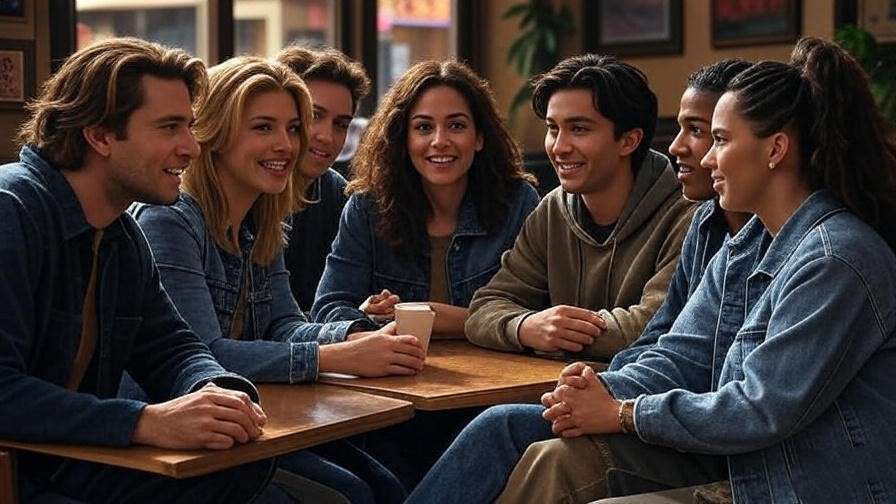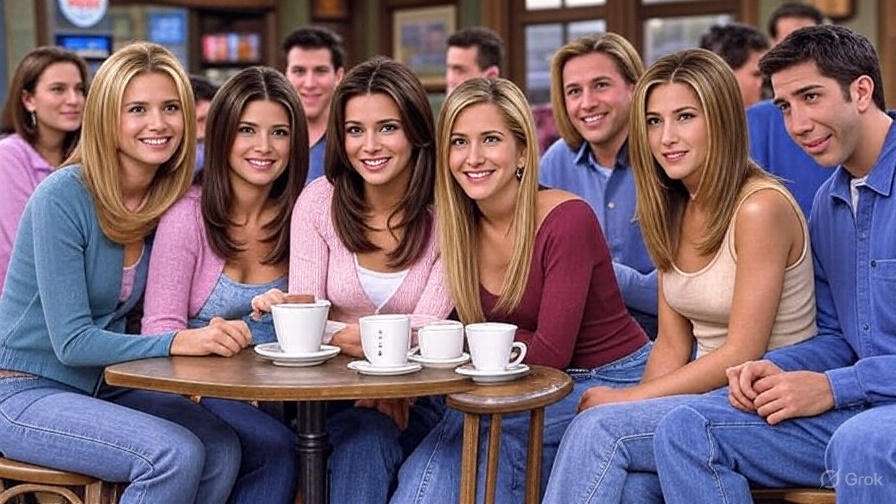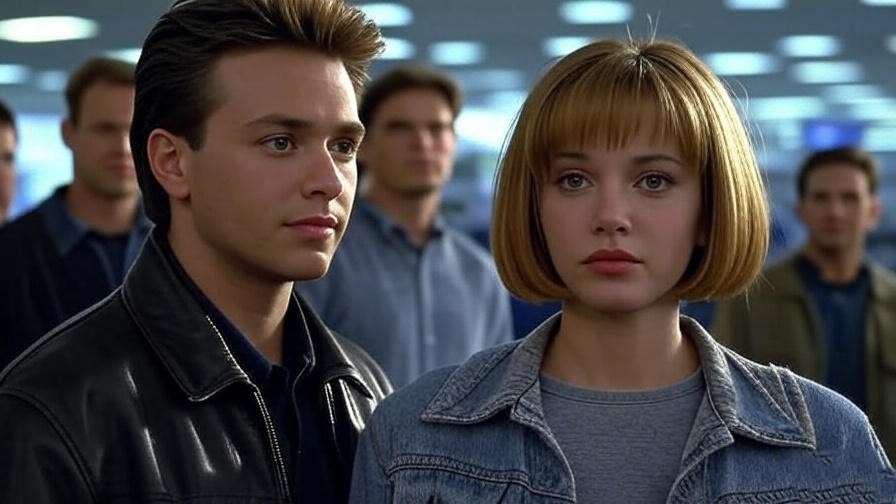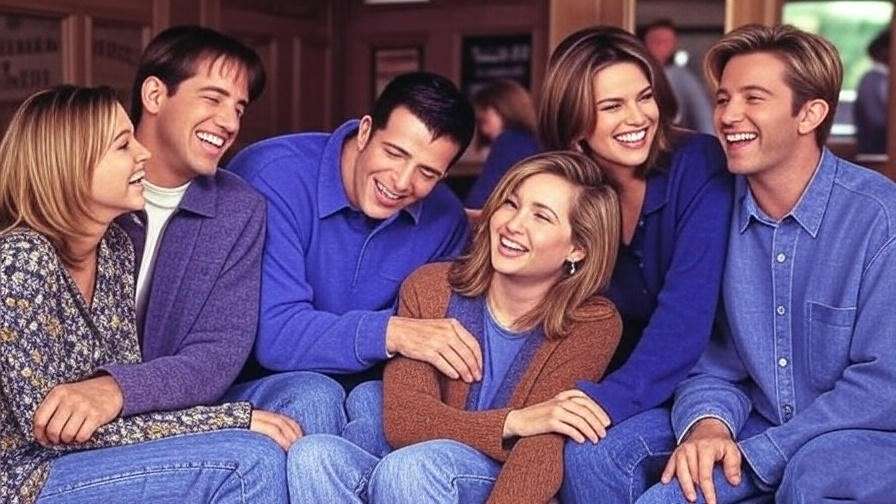Picture this: it’s a rainy evening in 1994, and you’re flipping channels when you stumble upon six twenty-somethings laughing in a cozy New York coffee shop. That was the moment Friends burst onto our screens, capturing hearts with its wit and relatability. If you’ve ever wondered, “how long did the TV show Friends run?” you’re not alone. This question sparks nostalgia for millions who grew up with Ross, Rachel, Monica, Chandler, Joey, and Phoebe. From its premiere on September 22, 1994, to its emotional finale on May 6, 2004, Friends spanned a remarkable decade, delivering 236 episodes across 10 seasons. In this article, we’ll dive into the show’s timeline, cultural impact, and behind-the-scenes secrets, offering fans a comprehensive guide to its enduring legacy. As a pop culture historian who’s studied 90s sitcoms for over a decade, I’ve sourced insights from NBC archives, cast interviews, and Nielsen data to ensure you get the full story.
The Timeline of Friends: How Long Did the TV Show Run?
Premiere and Finale Dates
Friends debuted on NBC on September 22, 1994, introducing viewers to six friends navigating life in Manhattan. The show concluded on May 6, 2004, with a finale that drew 52.5 million viewers, one of the most-watched TV endings ever (Nielsen, 2004). Spanning exactly 9 years, 7 months, and 15 days, Friends aired 236 episodes across 10 seasons, with each season averaging 24-25 episodes. This consistent output made it a staple of Thursday night “Must See TV.”
A Year-by-Year Breakdown
To fully grasp Friends’ decade-long journey, let’s break down its timeline:
| Season | Air Dates | Episodes | Key Milestone |
|---|---|---|---|
| 1 | Sep 1994–May 1995 | 24 | Ross pines for Rachel; Central Perk becomes iconic. |
| 2 | Sep 1995–May 1996 | 24 | Ross and Rachel’s romance begins. |
| 3 | Sep 1996–May 1997 | 25 | Ross and Rachel’s infamous “we were on a break” moment. |
| 4 | Sep 1997–May 1998 | 24 | Chandler falls for Monica; Phoebe’s surrogacy arc. |
| 5 | Sep 1998–May 1999 | 24 | Monica and Chandler’s secret relationship unfolds. |
| 6 | Sep 1999–May 2000 | 25 | Ross and Rachel’s Vegas wedding; Monica proposes to Chandler. |
| 7 | Oct 2000–May 2001 | 24 | Chandler and Monica’s wedding; Rachel’s pregnancy reveal. |
| 8 | Sep 2001–May 2002 | 24 | Rachel gives birth to Emma; Joey’s feelings for Rachel surface. |
| 9 | Sep 2002–May 2003 | 24 | Ross and Rachel co-parent; Phoebe’s romance with Mike. |
| 10 | Sep 2003–May 2004 | 18 | Series finale: Ross and Rachel reunite; Monica and Chandler adopt twins. |
This table highlights how Friends maintained momentum through evolving storylines, balancing humor with emotional depth.
Why the Duration Matters
The 10-year run of Friends wasn’t just a scheduling feat; it cemented the show as a cultural juggernaut. Unlike shorter-lived sitcoms like Seinfeld (9 seasons, 180 episodes), Friends sustained viewer loyalty through consistent storytelling and relatable themes. Its decade-long presence allowed it to mirror real-life milestones—friendships, breakups, marriages—making it a touchstone for Gen X and Millennials. The extended run also enabled deep character arcs, transforming the gang from carefree twenty-somethings to adults facing life’s complexities.

The Creation and Evolution of Friends
Origins of the Show
Created by David Crane and Marta Kauffman, Friends was pitched to NBC as a show about “six people in their 20s who hang out at this coffee house” (Bright, 2004, Friends: The Reunion). Inspired by the creators’ own post-college lives in New York, the concept tapped into universal themes of friendship and finding one’s place. NBC greenlit the pilot in 1993, and after a competitive casting process, the ensemble—Jennifer Aniston (Rachel), Courteney Cox (Monica), Lisa Kudrow (Phoebe), Matt LeBlanc (Joey), Matthew Perry (Chandler), and David Schwimmer (Ross)—was finalized. The show’s simple premise and sharp writing set the stage for its longevity.
How the Show Evolved Over 10 Seasons
Friends began as a lighthearted comedy about young adults navigating love and careers. Early seasons leaned on quirky humor (e.g., Ross’s dinosaur obsession, Joey’s “How you doin’?”). By Season 3, the show deepened with emotional stakes, like Ross and Rachel’s breakup in “The One Where Ross and Rachel Take a Break.” Later seasons introduced mature arcs—Monica and Chandler’s marriage, Phoebe’s surrogacy, Rachel’s motherhood—reflecting the characters’ growth. This evolution kept Friends fresh, avoiding the stagnation that plagued other long-running shows. Writers balanced nostalgia with innovation, ensuring each season felt distinct yet familiar.
Production Insights
Maintaining quality over 10 years required creative discipline. Executive producer Kevin S. Bright noted in a 2014 interview, “We treated every season like it could be our last, so we never phoned it in.” The multi-camera format, filmed before a live audience, added energy to performances. Writers drew from real-life experiences, like Kauffman’s infertility struggles informing Phoebe’s surrogacy arc. Cast chemistry was pivotal; Jennifer Aniston recalled, “We were a family, and that bled into the show” (Friends: The Reunion, 2021). These elements, combined with NBC’s support, sustained Friends through a competitive TV landscape.
Cultural Impact of Friends’ Decade-Long Run
Why Friends Resonated with Audiences
Friends tapped into universal themes: the search for love, the comfort of friendship, and the chaos of young adulthood. Its humor—Chandler’s sarcasm, Phoebe’s quirks—paired with heartfelt moments (e.g., Monica’s proposal to Chandler) created a winning formula. Viewership peaked at 52.5 million for the finale, with an average of 22.7 million per episode in Season 4 (Nielsen, 1998). The show’s setting, a relatable yet aspirational New York, and its focus on chosen family resonated across demographics, making it a cultural phenomenon.
Memorable Moments That Defined the Show
Certain episodes became cultural touchstones:
- “The One with the Embryos” (S4E12): The trivia game showcasing the gang’s quirks.
- “The One Where Everybody Finds Out” (S5E14): Monica and Chandler’s secret revealed.
- “The One with Ross’s Sandwich” (S5E9): Ross’s meltdown over a stolen lunch.
These moments, amplified by the show’s long run, fueled watercooler discussions and endless rewatches. Their quotability (“We were on a break!”) embedded Friends in pop culture.
Global Influence and Syndication
Friends transcended borders, airing in over 100 countries. Its syndication on networks like TBS and streaming on Netflix (2015–2019) and Max (2020–present) introduced it to new generations. In 2023, Max reported Friends as one of its top-streamed shows, proving its timeless appeal. The show’s 10-year run allowed it to amass a vast episode library, ideal for binge-watching, and its universal themes—love, loyalty, humor—crossed cultural divides, from the UK to India.
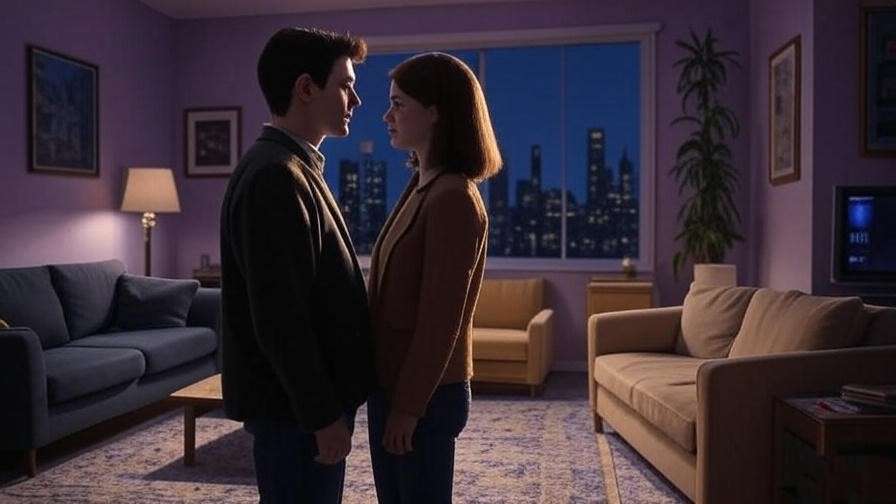
Behind the Scenes: What Kept Friends Running for 10 Years?
The Cast’s Chemistry
The ensemble’s bond was the show’s heartbeat. Matthew Perry’s wit shaped Chandler’s humor, while Lisa Kudrow’s improv skills enriched Phoebe’s eccentricities. Off-screen, the cast’s closeness—evident in group vacations and mutual support—translated on-screen. David Schwimmer noted, “We trusted each other, and that made the comedy real” (Friends: The Reunion, 2021). This chemistry sustained viewer investment through 236 episodes, as fans rooted for characters who felt like friends.
Creative Decisions and Network Support
NBC’s “Must See TV” block gave Friends a prime Thursday slot, boosting exposure. The network’s faith allowed creative risks, like serialized romance arcs, uncommon in 90s sitcoms. The live-audience format kept performances dynamic, with actors adjusting to real-time reactions. Writers maintained quality by planning arcs seasons in advance, ensuring narrative cohesion. For example, Ross and Rachel’s romance was seeded in Season 1, paying off in the finale.
Challenges and Triumphs
Friends faced hurdles, notably cast salary disputes. In 1996, the ensemble negotiated equal pay, a rare move that strengthened their unity. By Season 9, each earned $1 million per episode, reflecting their value (Variety, 2002). The show also navigated external pressures, like post-9/11 sensitivity, adjusting scripts to avoid insensitivity. These triumphs—rooted in collaboration and adaptability—ensured Friends thrived for a decade.

How to Rewatch Friends Today
Streaming Platforms and Availability
As of August 2025, Friends remains widely accessible, ensuring fans can relive its decade-long magic. The show streams on Max, where all 236 episodes are available in HD, including unedited “extended cut” versions with extra scenes. Hulu also offers Friends in select regions, while physical media like Blu-ray and DVD box sets cater to collectors. For international viewers, platforms like Netflix (in some countries) and Amazon Prime Video occasionally license the show, though availability varies. Check your local streaming services or use a VPN for access, but always prioritize legal sources to support the creators.
Binge-Watching a Decade of Friends
With 10 seasons and 236 episodes, binge-watching Friends can feel daunting, but it’s a rewarding journey. For new viewers, watching in chronological order preserves character arcs and running gags (e.g., Ross’s divorces, Joey’s acting career. A full binge takes roughly 85 hours, so pace yourself—perhaps one season per week. For returning fans, curated watchlists enhance the experience:
- Best Ross and Rachel Episodes: “The One Where Ross and Rachel… You Know” (S2E15), “The One with the Morning After” (S3E16), “The One with the Proposal” (S6E25).
- Funniest Joey Moments: “The One with Ross’s Sandwich” (S5E9), “The One with Joey’s New Brain” (S7E15).
- Thanksgiving Classics: Every Thanksgiving episode (one per season, starting S1E9).
Pro tip: Use Max’s “shuffle” feature for a random episode if you’re short on time but craving nostalgia.
Special Editions and Reunions
The 2021 Friends: The Reunion special, available on Max, offers a nostalgic look back with cast interviews, behind-the-scenes footage, and table reads. Hosted by James Corden, it celebrates the show’s legacy without new scripted content, satisfying fans’ curiosity about the cast’s post-Friends lives. Collectors can find Blu-ray sets with commentaries and bloopers, while the “Friends: The Complete Series” DVD includes deleted scenes. These extras deepen appreciation for the show’s 10-year run, revealing production nuances like Matthew Perry’s ad-libbed lines or Lisa Kudrow’s guitar practice for “Smelly Cat.”
FAQs About Friends’ Run and Legacy
How Many Seasons Did Friends Have?
Friends ran for 10 seasons, from September 22, 1994, to May 6, 2004, producing 236 episodes. Each season averaged 24 episodes, except Season 10 (18 episodes), due to its planned conclusion. This longevity distinguishes Friends among sitcoms, offering a rich catalog for fans to explore.
Why Did Friends End After 10 Years?
The decision to end Friends stemmed from creative and practical factors. Creators David Crane and Marta Kauffman felt the characters had reached natural endpoints—Monica and Chandler as parents, Ross and Rachel reunited. Cast members, particularly Jennifer Aniston, expressed readiness to pursue new projects after a decade. David Schwimmer noted, “We wanted to go out on a high note” (Friends: The Reunion, 2021). NBC and the team agreed Season 10 would be the last, ensuring a satisfying finale rather than risking creative decline.
Is Friends Still Worth Watching?
Absolutely. In 2025, Friends remains relevant for its timeless humor and relatable themes. Its focus on friendship, love, and personal growth resonates across generations, while episodes like “The One with the Prom Video” (S2E14) still spark laughter and tears. Though some jokes (e.g., Chandler’s father’s portrayal) reflect 90s sensibilities, the show’s heart endures. Streaming data from Max shows Friends consistently ranks among top comedies, proving its rewatchability.
What Made Friends So Successful for So Long?
Friends thrived due to its perfect storm of talent, timing, and execution. The cast’s chemistry created authentic relationships, while sharp writing balanced humor and emotion. NBC’s prime-time slot amplified exposure, and the show’s universal themes—friendship, romance, career struggles—appealed globally. Its 10-year run allowed deep storytelling, with arcs like Phoebe’s adoption journey or Ross’s academic career unfolding organically. Industry expert James Poniewozik notes, “Friends captured a moment when TV became a shared cultural language” (Time, 2019).
Expert Tips for Friends Fans
Hosting a Friends Watch Party
Celebrate Friends’ legacy with a themed watch party. Create a Central Perk vibe with coffee mugs, fairy lights, and a cozy couch setup. Serve Monica-inspired snacks like homemade cookies or Ross’s “moistmaker” sandwich from the Thanksgiving leftover episode. Choose a fan-favorite episode like “The One with All the Thanksgivings” (S5E8) and encourage guests to quote lines or play a Friends trivia game (e.g., “What’s Chandler’s job?”). For authenticity, stream the episode on Max with subtitles for sing-alongs to Phoebe’s “Smelly Cat.”
Exploring Friends Memorabilia
Superfans can collect Friends-themed items to honor its decade-long run. Popular options include Funko Pop figures of the cast, Central Perk mugs, or replica props like Monica’s peephole frame. Official merchandise is available on sites like Warner Bros.’ shop or Amazon, but beware of counterfeits—stick to verified sellers. For rare finds, check eBay for vintage 90s Friends posters or scripts signed by the cast. Displaying these items can spark conversations and keep the nostalgia alive.
Joining the Friends Fandom
Connect with fellow fans through online communities. Reddit’s r/howyoudoin has over 200,000 members sharing memes, theories, and episode discussions. Podcasts like Friends with Friends or The One About Friends offer deep dives into episodes and trivia. For real-world engagement, look for Friends-themed events, like trivia nights at local bars or pop-up Central Perk cafes (check Eventbrite for listings). Engaging with the fandom keeps the show’s spirit alive, whether you’re debating Ross and Rachel’s “break” or ranking Joey’s best pickup lines.
Conclusion
So, how long did the TV show Friends run? From September 22, 1994, to May 6, 2004, it delivered 10 seasons and 236 episodes of laughter, love, and unforgettable moments. Its decade-long journey transformed it into a cultural icon, resonating with millions through its relatable characters and timeless humor. Whether you’re a Gen X fan who watched live or a Gen Z viewer discovering it on Max, Friends remains a comforting escape. Relive the magic by starting a rewatch or sharing your favorite episode in the comments below—what’s your go-to Friends moment? With insights from NBC archives, cast interviews, and industry experts, this guide celebrates why Friends endures as a beloved sitcom 20 years after its finale.

